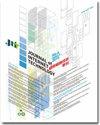一种基于深度学习的带宽压缩非正交多载波通信均衡方案
IF 1.2
4区 计算机科学
Q4 COMPUTER SCIENCE, INFORMATION SYSTEMS
引用次数: 1
摘要
频谱高效频分复用(SEFDM)是一种带宽压缩的非正交多载波通信方案,与正交频分复用系统相比,它提高了频谱效率。正交性的损失导致自引入的载波间干扰(ICI)使均衡器设计复杂化。在这项工作中,提出了一种基于深度学习(DL)的SEFDM均衡方案来表征ICI并检测传输的信息比特。基于DL的均衡方案使用随机生成的数据进行线性训练,然后在线部署。通过大量的数值模拟测试了均衡方案的性能。结果表明,在加性高斯白噪声(AWGN)信道下,所提出的均衡方案在误码率(BER)方面优于基于线性均衡的均衡方案,如迫零(ZF)、最小均方误差(MMSE)和截断奇异值分解(TSVD)。特别是对于BPSK,即使压缩比为0.7,未编码的BER性能也接近传统的OFDM,这节省了30%的带宽。本文章由计算机程序翻译,如有差异,请以英文原文为准。
A Deep Learning Based Equalization Scheme for Bandwidthcompressed Non-orthogonal Multicarrier Communication
Spectrally efficient frequency division multiplexing (SEFDM) is a bandwidth-compressed non-orthogonal multicarrier communication scheme, which provides improved spectral efficiency compared to orthogonal frequency division multiplexing (OFDM) system. The loss of orthogonality yields the self-introduced inter-carrier interference (ICI) complicating the equalizer design. In this work, a deep learning (DL) -based SEFDM equalization scheme is proposed to characterize the ICI and to detect the transmitted information bits. The DL-based equalization scheme is trained offline using randomly-generated data and then deployed online. The performance of the equalization scheme is tested by extensive numerical simulations. The results show that the proposed equalization scheme outperforms the linear equalization based equalization scheme, such as zero forcing (ZF), minimum mean squared error (MMSE) and truncated singular value decomposition (TSVD), under additive white Gaussian noise (AWGN) channel in terms of the bit-error rate (BER). Especially for BPSK, the uncoded BER performance approaches the traditional OFDM even for the compression ratio of 0.7, which saves the bandwidth by 30%.
求助全文
通过发布文献求助,成功后即可免费获取论文全文。
去求助
来源期刊

Journal of Internet Technology
COMPUTER SCIENCE, INFORMATION SYSTEMS-TELECOMMUNICATIONS
CiteScore
3.20
自引率
18.80%
发文量
112
审稿时长
13.8 months
期刊介绍:
The Journal of Internet Technology accepts original technical articles in all disciplines of Internet Technology & Applications. Manuscripts are submitted for review with the understanding that they have not been published elsewhere.
Topics of interest to JIT include but not limited to:
Broadband Networks
Electronic service systems (Internet, Intranet, Extranet, E-Commerce, E-Business)
Network Management
Network Operating System (NOS)
Intelligent systems engineering
Government or Staff Jobs Computerization
National Information Policy
Multimedia systems
Network Behavior Modeling
Wireless/Satellite Communication
Digital Library
Distance Learning
Internet/WWW Applications
Telecommunication Networks
Security in Networks and Systems
Cloud Computing
Internet of Things (IoT)
IPv6 related topics are especially welcome.
 求助内容:
求助内容: 应助结果提醒方式:
应助结果提醒方式:


